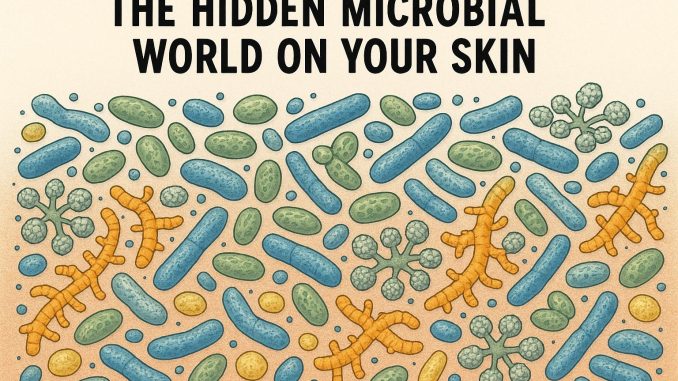
The Microbial Ecosystem of Human Skin
Your skin holds the title of being not only your body’s largest organ but also the essential boundary between you and the external environment. Beneath this seemingly simple surface, however, exists a multifaceted world of microorganisms that play a substantial role in maintaining your health. This microbial habitat, often referred to as the skin microbiota, encompasses a variety of bacteria, fungi, viruses, and mites, each contributing uniquely to skin function.
The Diversity of Skin Microbiota
The array of microorganisms residing on the skin is vast. Among these, bacteria dominate in terms of numbers and diversity. Notable bacterial genera include Staphylococcus, Streptococcus, and Propionibacterium. Some skin surfaces host up to a billion bacteria per square inch. Each bacterium is adapted to thrive in distinct micro-environments on the human body. Although bacteria are the most prominent, fungi, viruses, and even mites play integral roles in the skin’s complex ecosystem.
Variation Across Skin Regions
A remarkable aspect of the skin microbiome is its variability across different regions of the body. This spatial diversity is determined by several factors including moisture, temperature, and sebaceous (oil-producing) activity. Moist areas, such as the armpits and groin, possess microbial communities distinctly different from those found in dry regions like the forearms. Oil-rich regions, including the face and back, create unique niches where certain microbes thrive over others. By comprehending these variances, scientists can better understand how these organisms influence skin health and the onset of various dermatological conditions.
The Role of Microbes in Skin Health
Microorganisms are integral for maintaining skin health, performing several protective and regulatory roles. They help safeguard the skin by forming a defensive barrier against pathogenic invaders, support wound healing processes, and are vital in educating the immune system. Importantly, they contribute to the skin’s barrier function, actively preventing harmful organisms from establishing. Disruptions in this microbial balance can lead to the development of skin disorders such as acne, eczema, and psoriasis. These conditions underscore the importance of ensuring a balanced skin microbiota, highlighting the beneficial relationship between skin and the microbes inhabiting it.
Factors Influencing Skin Microbiota
Several intrinsic and extrinsic factors shape the composition of skin microbiota. Genetic predispositions, age, gender, and underlying health conditions are intrinsic elements influencing microbial diversity. Meanwhile, external factors such as environmental conditions, personal hygiene routines, and the use of skincare products also impact the skin’s microbial inhabitants. Lifestyle choices, including dietary habits and the frequency of antimicrobial agents’ usage, play a role as well. For instance, the habitual use of antimicrobial products can disrupt the natural equilibrium of skin microbiota, potentially leading to adverse effects. Recognizing and understanding these influencing factors is crucial for maintaining the natural balance of skin microbiota and overall skin health.
Research and Future Implications
The burgeoning field of skin microbiota research is yielding promising insights into potential therapeutic applications. As scientists delve deeper into the analysis of these complex microbial ecosystems, opportunities arise for innovative strategies to treat and prevent skin diseases. Understanding the microbiota opens avenues for developing targeted probiotics or other interventional treatments aimed at promoting a healthy skin microbiome. This knowledge is pivotal for devising strategies that harness the skin’s natural microbial communities to enhance skin resilience and health.
For those who seek to expand their knowledge on this captivating subject, the field of dermatology and microbiology offers extensive resources. In-depth information and pioneering discoveries on skin microbiota can be found through reputable scientific publications and journals. By staying informed through these multimedia platforms, researchers, healthcare professionals, and interested individuals can access the latest findings, providing invaluable insights into this hidden and dynamic component of human health. Scientific endeavors in understanding the skin microbiome highlight its integral role and underscore the continual evolution of our knowledge concerning this essential organ and its complex microbial inhabitants.
